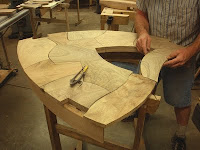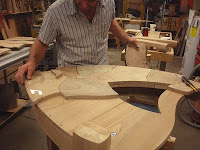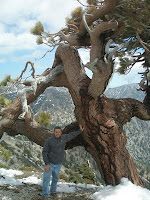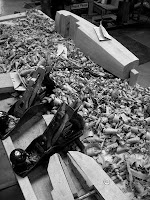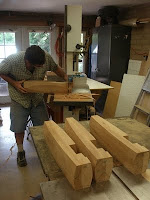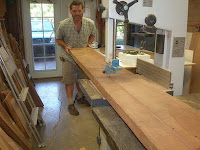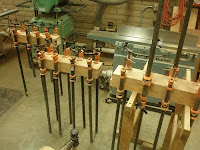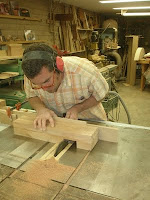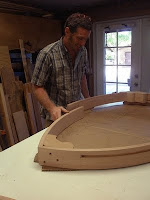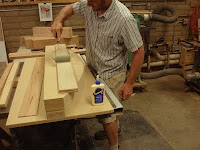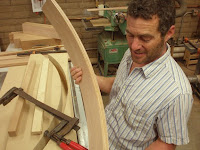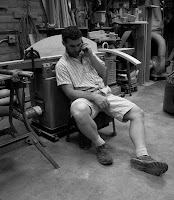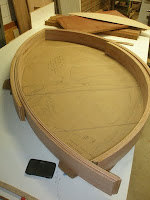Just so I can pretend to know what I am talking about...what kind of wood did you use ?
Best,

----- Original Message -----
From: PhilP [phil@philipponvertdesigns.com]
Sent: 06/23/2011 04:23 PM MST
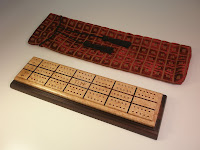
Top part with the holes is bird’s eye maple- it comes from the UP of Michigan and was a slice off the end of a board that has been in my collection for years in Michigan and made the cut to be hauled out here. The darker wood is macasar ebony- a bit rare these days and came from a friends saw mill in Tucson, that piece is likely 30 years old since cutting, stored in some guys shop, my pal bought it and then I bought it and threw it in my truck along with a pile of Mesquite lumber, hauled it up here to Sedona and stuffed it in my wood rack. All these pieces just sit and wait until I have just the right project- in fact these two pieces were so close to the right grain, contrast and size that the trimmings of wood might have filled my shirt pocket. The design of the board with magnet and storage came from several sources I found that had antique boards – and I like the fact that you can have a special set of cards and pegs for this special board. The lettering for the initials font is Optima and I like its subtle nature. When I was done making this for you guys several people came through the shop and admired it, a lot. One was a friend who is an upholsterer and she and I agreed that a finishing touch would be the bag, so she went right home and pulled some material samples and we agreed on the red with the black draw string. It has an oil finish and the ebony may be a little sticky, hence the rags, keep them around a while so you can buff it off.
So there you have it- take care- Phil

It's perfect. I just gave it to her and she cried. Never underestimate the power your work gives others.
Thanks man......
--------------------------
Sent from my BlackBerry Wireless Handheld
